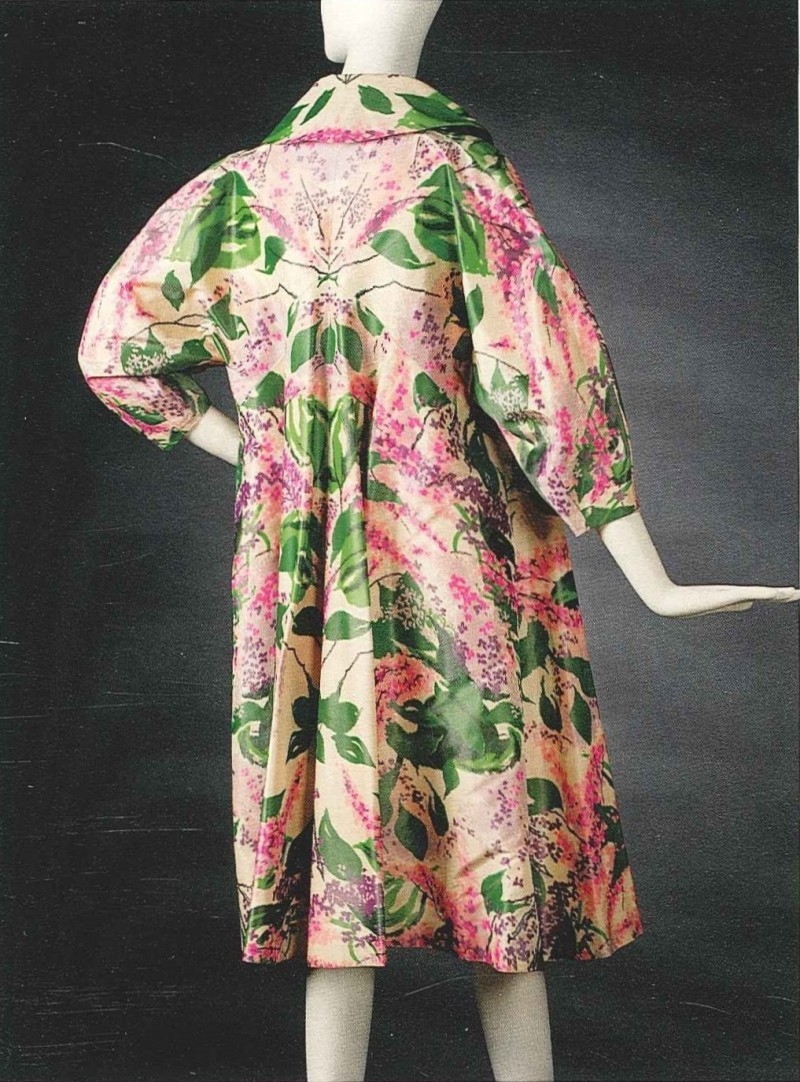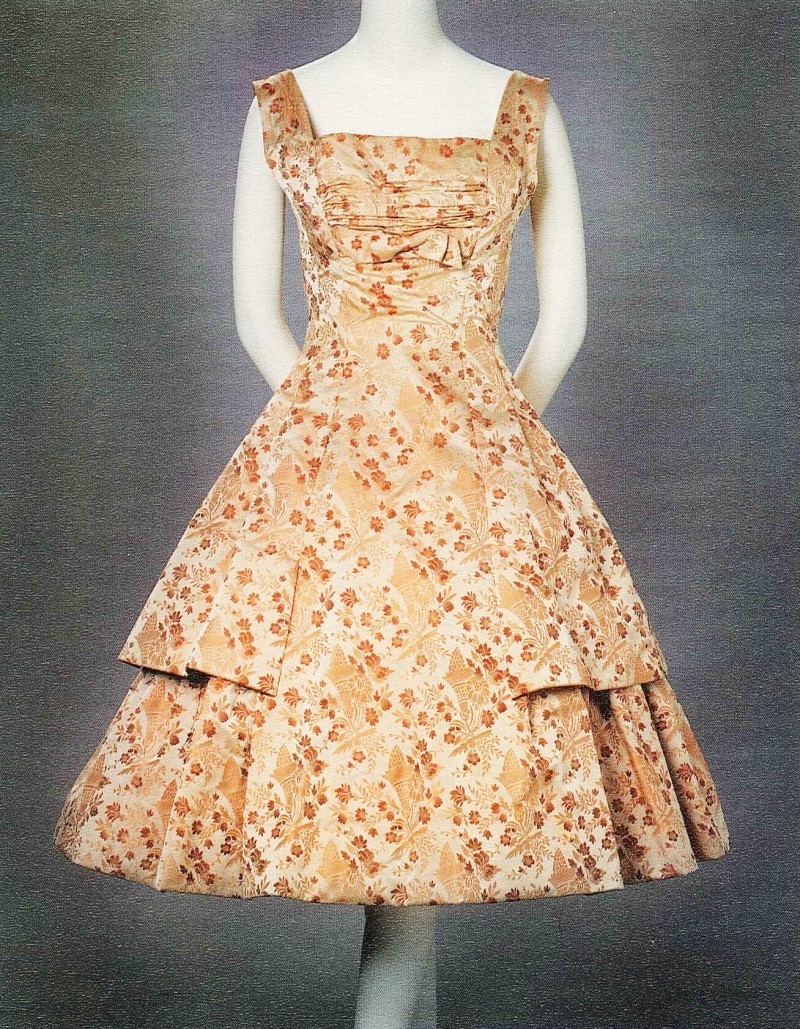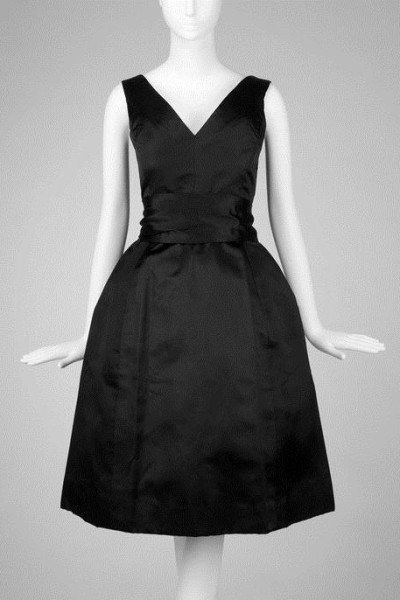What makes for a perfect cocktail party dress? In the City-by-the-Sea, where there is no shortage of summertime cocktail parties, venues, vistas, galas and intimate gatherings, our calendars get jam-packed early on. After all, this is New England – so when summer rolls around, we are ready to step out and don our cocktail party finery.
If you’ll permit me a personal note, since we are talking about the cocktail dress, in my heart of hearts no period in modern fashion is as inspiring or important (coming as it did following World War II) as the years from 1945–1960. The “new romanticism,” as it was touted, expressed the joy of life going forward post-War and celebrated women and their femininity. With lavish full skirts, longer hems and cinched waists, the cocktail dress style was both glamorous and functional! I’m so drawn to the creations of the European masters – Christian Dior, Balenciaga, Givenchy, Chanel…and in America – Norman Norell, Teal Traina, Pauline Trigere, Oleg Cassini (Jackie Kennedy’s favorite)… who truly captured pure elegance in the simplicity, craftsmanship and timelessness of their creations. For a glimpse of these fashions to share with you, I turned to the exhibit “Cocktail Culture: Ritual and Invention in American Fashion,” which debuted a few years back at the world-renowned Rhode Island School of Design (RISD) Museum (as its fascinating catalog noted, both the “cocktail party” and the accompanying dress style that came to be known as the “cocktail dress,” were the product of an American lifestyle evolving in the mid-1940s.)
And it is Newport we’re talking about, which Town and Country has proclaimed the “epitome of old school American elegance.” As if to make that point, the dress that opened the show had belonged to my dear friend Ronnie Dick’s mother. How appropriate to start this journal with details of her Christian Dior treasure.
The classic black cocktail dress – or as it’s known today the “LBD” (Little Black Dress.) No lady’s closet should be without (at least) one! Christian Dior’s 1954 version in silk and satin weave is breathtaking. I adore the simplicity of the neckline, the flattering sash waist, the flared skirt and the back detail…yes, you could put this dress on tonight and head off to a cocktail party, feeling appropriately attired. That’s the definition of a classic!
Certainly, every closet deserves 1 or more LBDs. But I would be remiss not to make this point… summertime cocktail parties in Newport are about color; it’s rather an unwritten tradition. We celebrate it. So let’s dive into color, head first…
Here, a 1949 “shirtwaist,” always in good taste and not overly formal – but the shock of color and fabric choice would make it the star of the evening. Oh, and that detailed ruching!
If a lighter, more floral, less formal number is in order, consider this 1947 cotton beauty by, again, Christian Dior (I love the bows on the shoulders.)

Often I bring along a summer-weight pashmina or light summer sweater in case a cool evening breeze comes off the water. When cocktail-partying, the concept of this lovely 1955 strapless dress, topped with a matching wrap (designed by Cristóbal Balenciaga,) suits to a tee.
In a recent interview, The Salonniere asked me to name my favorite party that I’ve attended. Though indeed a tricky question, I knew immediately – a surprise party for fifty in the small, exquisite Chinese Tea House at Marble House. For such an occasion, if I’d had access to the RISD Museum archives, I might have selected this silk, screen-printed, Asian-inspired dress created by designer Vera Maxwell (1965).

And a few more on which to feast your eyes:
Irene Lentz Gibbons, woman’s evening coat, ca. 1954, silk, plain weave, warp printed.

(Left) Ca. 1965. Mollie Parnis (American Designer). Nylon, rhinestone, metallic thread; gauze weave, embroidered; center back length 38 1/2 in. Gift of Mrs. Reuben Horowitz.
(Right) Ca. 1965. Topal-Carlson, label, Providence, 20th Century. Silk, nylon, plastic, beads, sequins; plain weave, embroidered; 34 in.

Norman Norell, dress (reverse), ca. 1950, silk, ribbed plain weave, printed.

Scaasi, dress, Autumn 1959, silk, plain weave, printed warp.

Simonetta (Duchesa Simonetta Colonna di Cesaro), dress, ca. 1958, silk, acetate, compound weave.

I do so hope you were inspired by these classic designs, shapes, patterns and colors. I know I am! So many parties, so little summer. Dress to enjoy!
















I love your blog and the colour scheme – it is beautiful.
Thank you so much, Abi. Music to my ears! Happy T Day, Bettie